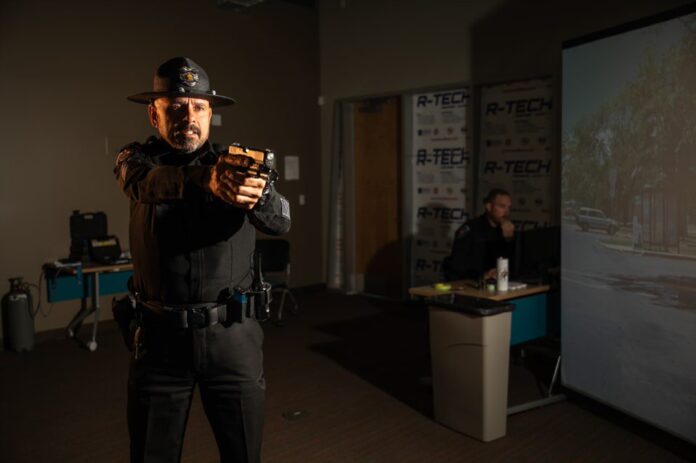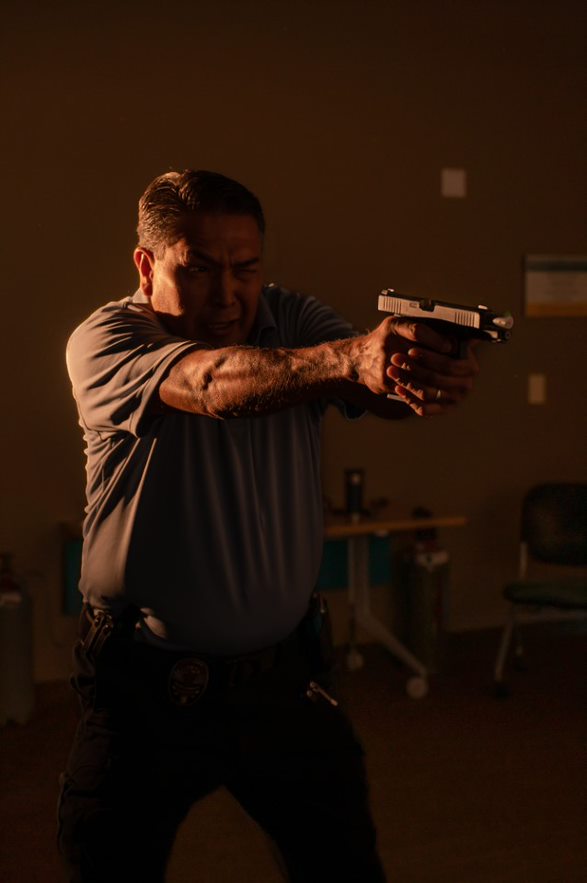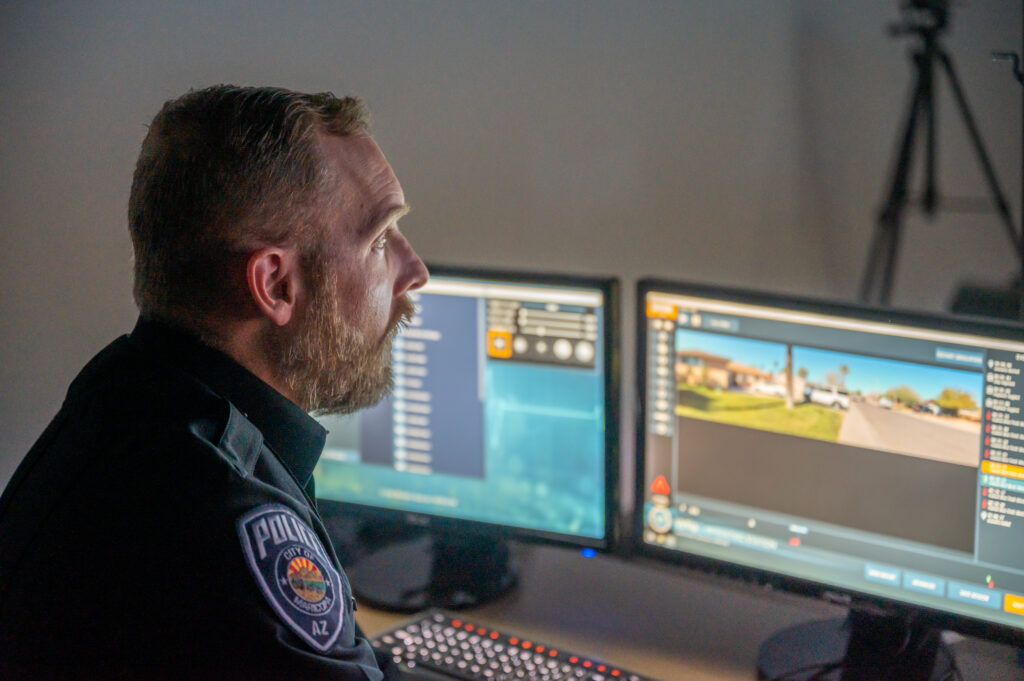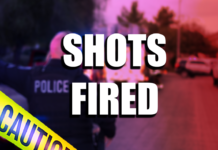
For any law enforcement officer, the decision to use force is difficult.
When Maricopa police officers respond to a call, they are walking into a situation where they have no idea whether the subject is armed, or what is on that person’s mind.
Elliot Sneezy, training sergeant for the Maricopa department, works to help ensure officers are mentally prepared to protect the public and themselves.
Sneezy pointed out officers have to consider using force and what may come from it, and what could happen if they do not use force.
Obviously, de-escalation is first choice for police officers. But what happens if that’s not possible?
An officer can learn how to deal with a situation physically and can work on his marksmanship, but there’s also a need for the mental side of their job, which is where the VirTra simulator comes into play.
The $163,400 simulator, purchased by the City with AZCares coronavirus relief funds, includes three television screens at least six feet tall and eight feet wide.
With lasers and infrared lights situated throughout, plus about 1,000 preprogrammed scenarios, the simulator helps prepare officers for whatever situation they may encounter.
Adam Pittman has been with the force 10 years. MPD’s training coordinator, his charge is to serve as the expert for the VirTra Simulator.
While the simulator’s focus is the mental aspect of the job, there’s also an effort to make the simulation as realistic as possible.

Pittman said the mock Glock is like shooting a paintball or an airsoft gun. There’s a recoil, but it’s about half that of a real firearm.
While parts of this simulator may feel a little bit like a video game, the mental side of the training takes precedence. Officers are placed into specific situations that require mental and physical acuity. Pittman adjusts each one in real time during the simulation.
These simulations offer the chance for officers to learn by engagement, but it also allows for their techniques to be critiqued, including how he or she dealt with the subject verbally. The equipment can evaluate officers’ posture and hold on the weapon.
“It can document where the officer shot, or where the bad guy is and how they responded,” Pittman said. “We can also record the officer and keep it for a short time, so that we can go through and say to them, ‘What were you thinking here? This is how you reacted here,’ and so on. It allows us to provide more personalized training for the officer, so that we can set them up for success in a real-world situation.”
While the system is useful, it’s just one tool needed by officers.
“The VirTra system can’t take over other training.” Pitman said. “We still need live firearms training, real driving training and real interaction with people.”
Regardless of whether a contact has a gun, that person must be taken seriously, as Sneezy noted.
“I’ve gotten into this discussion with a lot of people before,” Sneezy said. “They’ll say, ‘Aw, the person just had a knife, why not just shoot them in the leg?’

The training allows officers to develop mental muscle memory and to prepare for difficult situations.
“Whenever you become stressed out, some people either rise to the occasion, or they start to slump into ‘Hey, I don’t really know what to do right now,’” Sneezy said.
The goal is to help officers think on their feet, make better decisions, and arrive at positive outcomes.
Some simulator scenarios include common interactions, like walking up to somebody and asking them to talk, or conducting a welfare check, Pittman explained.
“As long as the officer is saying the right things, we can make the adjustment where the subject calms down because the officer says, ‘Hey, I just want to talk to you for a minute, you’re not violating any laws or anything like that, but let’s talk.’ That’s what we want to see.
“The training isn’t just about escalating, but it’s also about de-escalating.”
Read additional content about law enforcement simulations.
Editor’s Note: This story appeared in the April edition of InMaricopa magazine, where it was stated the Maricopa Police Department’s last officer-involved shooting was in 2015, which was true at the time of publishing. Subsequently, on March 27, Maricopa Police officers shot and killed a man who allegedly threatened officers with a gun. The shooting is being investigated by the Pinal County Sherriff’s Office. You can read more about it here and here.







![Who’s the Best Mom InMaricopa? Nominate now! Marlene Marshall, Christina Olivares, and Meghan Bremer. [Bryan Mordt]](https://www.inmaricopa.com/wp-content/uploads/2023/05/BCM_8465-218x150.jpg)





![Alleged car thief released without charges Phoenix police stop a stolen vehicle on April 20, 2024. [Facebook]](https://www.inmaricopa.com/wp-content/uploads/2024/04/IMG_5040-218x150.jpg)